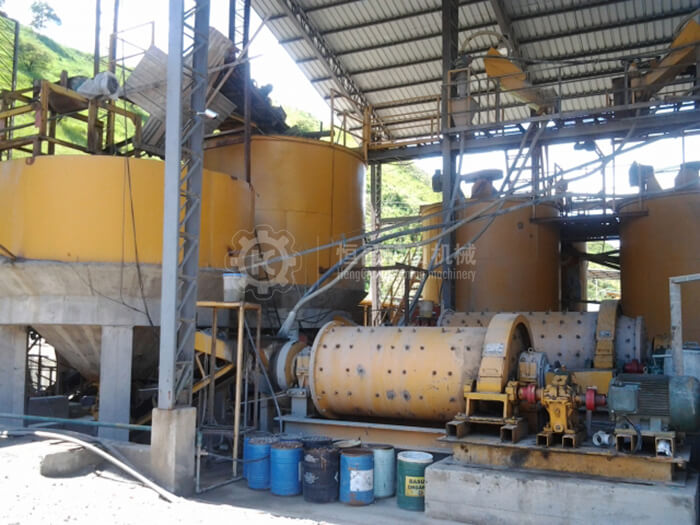 HOME
>
NEW CENTER
>
How many steps are there from raw ore to gold ingot in the gold ore carbon in leaching processing plant?
HOME
>
NEW CENTER
>
How many steps are there from raw ore to gold ingot in the gold ore carbon in leaching processing plant?
How many steps are there from raw ore to gold ingot in the gold ore carbon in leaching processing plant?
2020-12-29 11:29:05
Activated carbon is added to the leaching tank, leaching and adsorption are carried out at the same time, absorbing while leaching, and it is called the carbon leaching method (CIL), which is developed on the basis of the carbon slurry method. The advantage is to reduce the number of leaching tanks and shorten the process. Therefore, capital construction investment and production costs can be reduced; while leaching and adsorbing, the dissolution kinetic conditions of gold are improved, which is beneficial to the leaching and adsorption of gold. The carbon leaching method mainly includes operations such as preparation of leaching raw materials, stirring leaching and countercurrent carbon adsorption, gold-loaded carbon desorption, electrowinning electrolysis, smelting ingot making, and carbon regeneration.
I Preparation of raw materials required for leaching
When the carbon leaching gold extraction process is used, the preparation of the leaching raw materials includes physical crushing and grinding and classification. Generally, the fineness of the ore classification overflow of the carbon leaching gold extraction process is mostly -200 mesh, accounting for 85-95%.
II Chip removal operation
Sawdust and debris in the pulp easily cause blockage of pipes and screens, and it is also easy to absorb gold in the pulp and mix it into the rich carbon. Therefore, it must be removed before leaching. If necessary, slurry concentration and addition of descaling agent are required. The descaling agent can also reduce the scaling on the surface of the activated carbon and the screen. Generally, two chip removal operations are required in the grinding process, respectively at the overflow of the first and second stages of grinding and classification. The chip removal equipment mostly adopts intermediate frequency linear vibrating screen. In the first chip removal operation, spiral screen and cylindrical screen can also be used. The sieve hole size of the dust removal screen should be as small as possible on the premise that the screen surface does not run out.
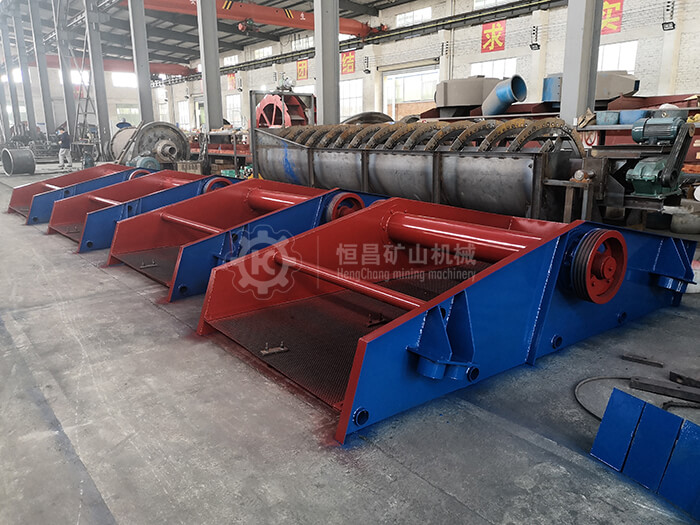
III Concentration before leaching
When the overflow concentration of grinding and classification is 18-22%, it is not suitable for direct leaching, and the slurry must be thickened. It is recommended to use a high-efficiency thickener with a small footprint and high concentration efficiency.
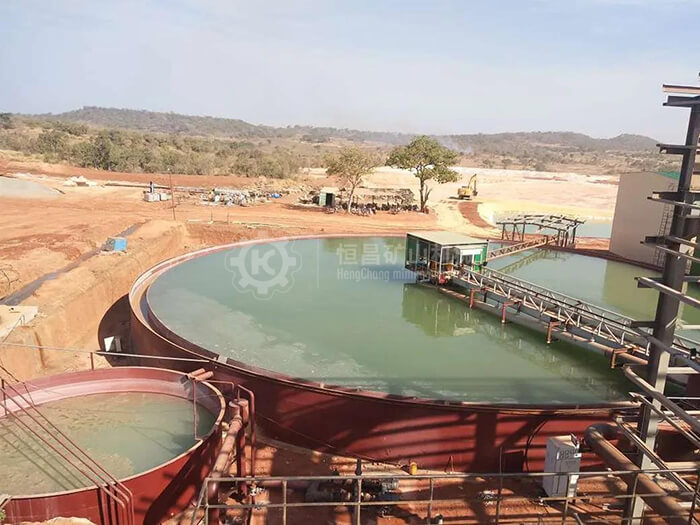
IV Stirring leaching and countercurrent carbon adsorption
The characteristic of the carbon leaching method is that the gold leaching and adsorption operations are carried out at the same time, and the number of leaching stages is generally 6-10 stages (the size and number of leaching tanks are determined by the processing capacity of the processing plant). Since the No. 1 tank has just added sodium cyanide, the amount of gold leached is relatively small, so most carbon leaching plants use the No. 1 tank as a pre-leaching tank, and the subsequent tank as a leaching adsorption tank. Each leaching adsorption tank is equipped with a carbon screen to separate the carbon and the slurry. The slurry flows in the forward direction and the activated carbon flows in the reverse direction, that is, the slurry and the activated carbon are adsorbed in a countercurrent flow. Fresh activated carbon is added from the last leaching adsorption tank while the gold is loaded. The carbon is discharged from the first leaching adsorption tank. The activated carbon becomes gold-loaded carbon due to the adsorption of gold in the slurry. After the adsorption is completed, the gold-loaded carbon slurry is fed to the carbon extraction screen through the air lifter, and the carbon extraction screen separates the activated carbon and the slurry. After sieving and washing, it is sent to the desorption electrowinning operation. The gold grade of the slurry solution after adsorption by this method is generally 0.01-0.03g/m³.
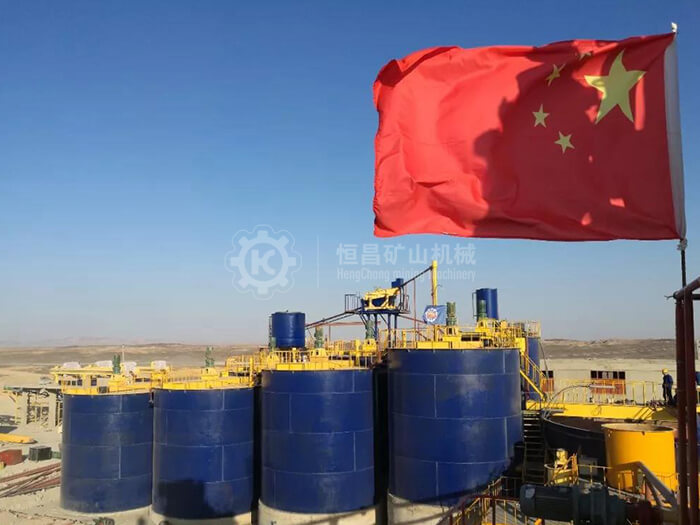
In general, the commonly used activated carbon is mostly coconut shell activated carbon, which has small cavities, high activity, wear resistance, and regeneration. It has good adsorption performance and wears resistance. It can increase the adsorption rate by 30% and greatly improve the gold in the associated metal. The recovery rate has significantly improved economic benefits and production efficiency.
V Gold-loaded carbon desorption and electrowinning
The gold-loaded carbon and slurry are lifted to the carbon separation screen (usually a linear vibrating screen) through a carbon lifting pump or an air lift. The screen is washed with clean water to separate the carbon from the slurry. The gold-loaded carbon enters the carbon storage tank, and the slurry and The flushing water enters the first stage adsorption tank.
There are several desorption methods for gold-carrying carbon. At present, high-temperature and high-pressure desorption is often used, that is, adding anions that are easy to be adsorbed by activated carbon to replace Au(CN)2- in the desorption system to achieve gold desorption; The precious liquid is recovered by ionization to obtain solid gold.
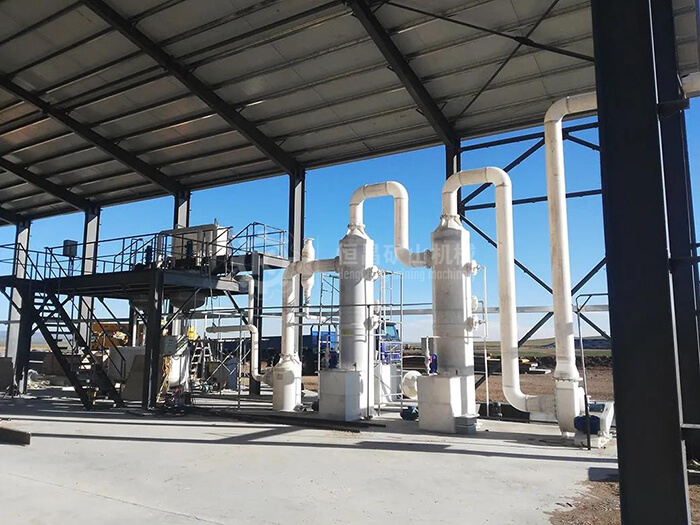
Take the desorption electrolysis system as an example. The system only needs sodium hydroxide as the desorption liquid and does not need sodium cyanide. Under this high temperature and high pressure condition (working temperature 150℃, pressure up to 0.5Mpa) gold-loaded carbon for desorption electrolysis, only 6 In ~12 hours, about 95% of the gold is desorbed, and the entire desorption process realizes cyanide-free, high efficiency, low consumption, and rapid desorption.
VI Smelt to make gold ingots
After pickling and removing impurities, the obtained gold mud can be directly smelted to produce gold ingots. Using hydrometallurgy, the purity of gold ingots can reach more than 99.99%.
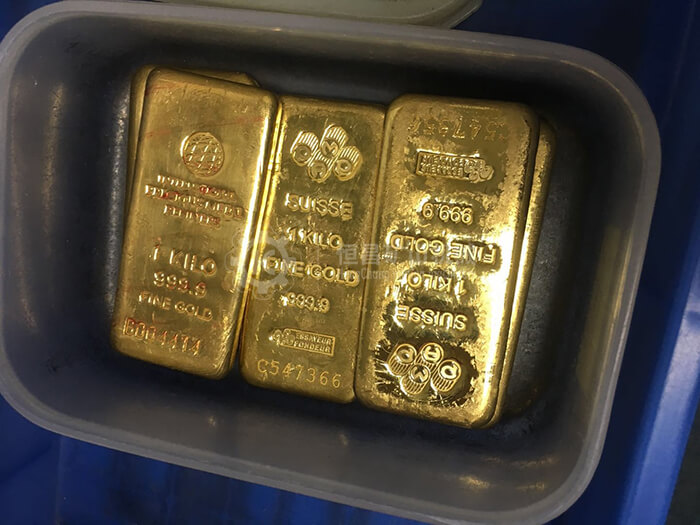
VII Activated carbon regeneration
After the activated carbon is adsorbed and desorbed, it needs to be regenerated to restore its good adsorption performance. Generally, the desorbed activated carbon is first washed with acid to remove accumulations such as carbonates. After being returned to use several times, it needs to be thermally activated to restore the adsorption activity of the carbon, and then it can be recycled. The main equipment includes activated carbon regeneration kiln, water quenching tank, fine carbon separation screen, etc.
The above is the common carbon in leaching process. The gold ore beneficiation method is suitable for processing gold ore and tailings after heavy separation and amalgamation. The carbon leaching method is developed on the basis of the carbon slurry method. The advantage lies in reducing the number of leaching tanks and shortening the process, thus reducing capital investment and production costs; while leaching and adsorption, it improves the dissolution kinetics of gold, which is beneficial the economic benefits of gold leaching and adsorption are more significant.
Hengchang Mining Machinery gold processing plant project
500tpd Gold Leaching Processing Plant in Malaysia
700tpd Tanzania Gold CIL Processing Plant
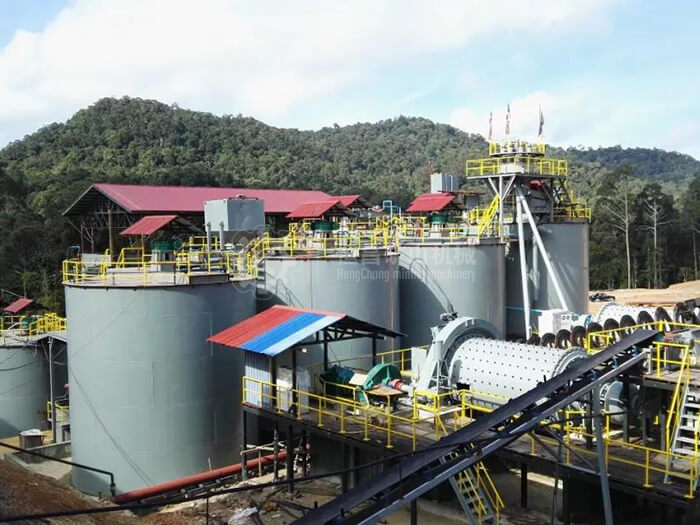
800tpd Zimbabwe Rock Gold Processing Plant
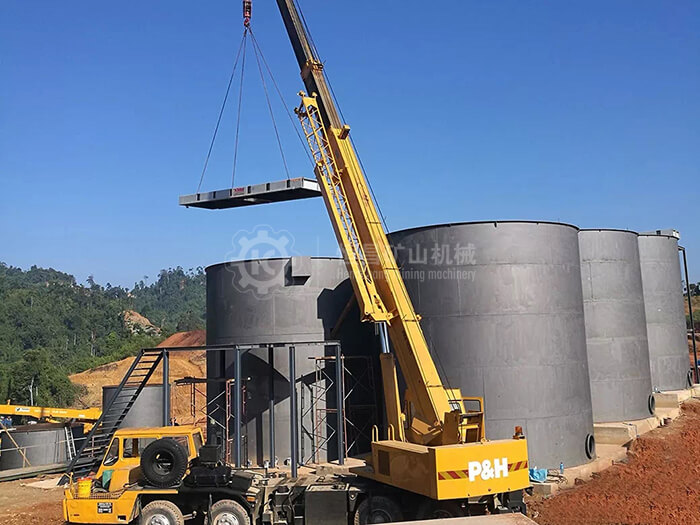
1000tpd Zambia Gold Processing Plant
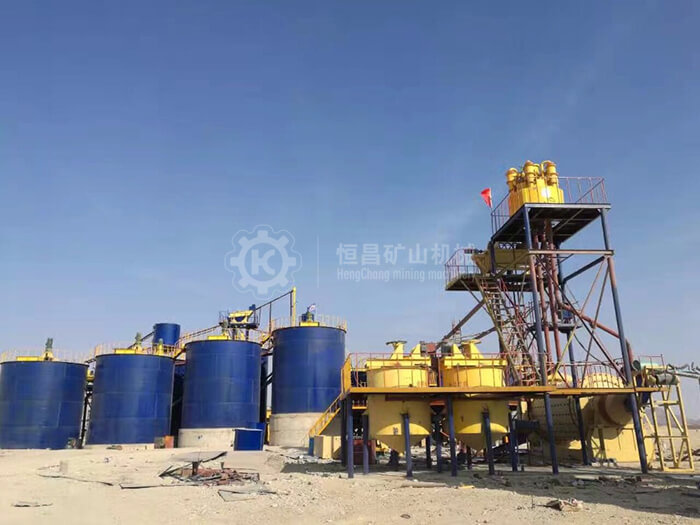
20tph Ghana Rock Gold Gravity Processing Plant
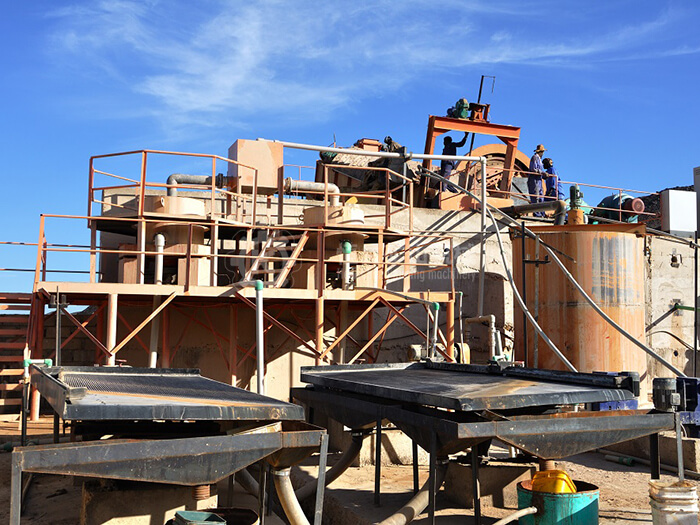
250tpd Indonesia Gold Processing Plant
